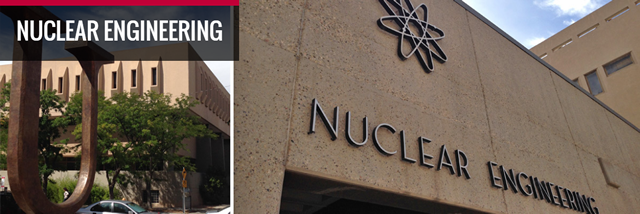
Nuclear Engineering ETDs
Publication Date
7-5-2012
Abstract
Safeguarding uranium enrichment facilities is a serious concern for the International Atomic Energy Agency (IAEA). Safeguards methods have changed over the years, most recently switching to an improved safeguards model that calls for new technologies to help keep up with the increasing size and complexity of todays gas centrifuge enrichment plants (GCEPs). One of the primary goals of the IAEA is to detect the production of uranium at levels greater than those an enrichment facility may have declared. In order to accomplish this goal, new enrichment monitors need to be as accurate as possible. This dissertation will look at the Advanced Enrichment Monitor (AEM), a new enrichment monitor designed at Los Alamos National Laboratory. Specifically explored are various factors that could potentially contribute to errors in a final enrichment determination delivered by the AEM. There are many factors that can cause errors in the determination of uranium hexafluoride (UF6) gas enrichment, especially during the period when the enrichment is being measured in an operating GCEP. To measure enrichment using the AEM, a passive 186-keV (kiloelectronvolt) measurement is used to determine the 235U content in the gas, and a transmission measurement or a gas pressure reading is used to determine the total uranium content. A transmission spectrum is generated using an x-ray tube and a 'notch' filter. In this dissertation, changes that could occur in the detection efficiency and the transmission errors that could result from variations in pipe-wall thickness will be explored. Additional factors that could contribute to errors in enrichment measurement will also be examined, including changes in the gas pressure, ambient and UF6 temperature, instrumental errors, and the effects of uranium deposits on the inside of the pipe walls will be considered. The sensitivity of the enrichment calculation to these various parameters will then be evaluated. Previously, UF6 gas enrichment monitors have required empty pipe measurements to accurately determine the pipe attenuation (the pipe attenuation is typically much larger than the attenuation in the gas). This dissertation reports on a method for determining the thickness of a pipe in a GCEP when obtaining an empty pipe measurement may not be feasible. This dissertation studies each of the components that may add to the final error in the enrichment measurement, and the factors that were taken into account to mitigate these issues are also detailed and tested. The use of an x-ray generator as a transmission source and the attending stability issues are addressed. Both analytical calculations and experimental measurements have been used. For completeness, some real-world analysis results from the URENCO Capenhurst enrichment plant have been included, where the final enrichment error has remained well below 1% for approximately two months.
Sponsors
Department of Energy National Nuclear Security Administrations Office of Nuclear Safeguards and Security (NA-241) and the Office of Nonproliferation and Verification Research and Development (NA-22).'
Document Type
Dissertation
Language
English
Degree Name
Nuclear Engineering
Level of Degree
Doctoral
Department Name
Nuclear Engineering
First Committee Member (Chair)
Cooper, Gary
Second Committee Member
Atanassov, Plamen
Third Committee Member
MacArthur, Duncan
Recommended Citation
Lombardi, Marcie. "From the lab to the real world : sources of error in UF6 gas enrichment monitoring." (2012). https://digitalrepository.unm.edu/ne_etds/17


